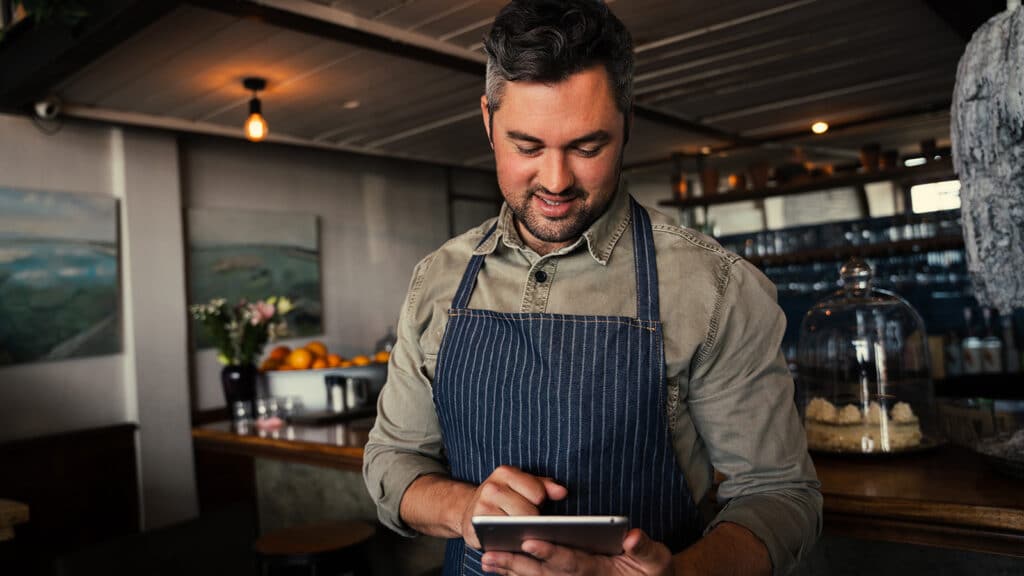Over the past few years food delivery has been on the upswing with no signs of slowing down. We decided to take a closer look at five key trends that have led to third-party delivery growth.
Millennials Are Key
This may seem like old news to some, but the power millennials have throughout the food delivery sector has grown immensely over the past year. Nigel Travis, CEO of Dunkin says, “I think the Millennial generation is much more demanding than prior generations.” He’s right, Millennials are demanding. But what exactly are they demanding from third-party delivery services? They demand instant gratification and seek effortless ways to bring their favorite restaurant items directly to their couches. Since millennials are spending a hefty amount of their budgets on prepared foods compared to any other generation to date, they are the key target audience for third-party delivery companies and restaurant operators alike. Millennial buy-in has been perhaps the most significant food delivery trend to recognize.
Growth in Food Delivery Revenue
The phrase “exponential growth” is tossed around quite a bit, but when people say there is going to be exponential growth in the food delivery sector, they mean it. The stats don’t lie! In the recent article, Meals on Wheels: The Digital Ordering and Delivery Restaurant Revolution, there are claims that delivery revenue is expected to grow at about three times the rate of dine-in sales. Yes, you read that correctly, three times the rate, that means a jump from $25 billion in 2018 to approximately $68 billion by 2023. How is that number expected to grow so much in just 5 years? Well, around 38 million consumers are currently using food delivery applications on their smartphones, fast forward 5 years and that number is almost going to double to 60 million!
Convenience is King!
You might wonder… why are people are relaxing in their homes instead of going out to eat? The answer is simple, it’s because restaurants are now capable of bringing the culinary experience directly to consumers doorsteps. The past year revolutionized the idea of what convenience means for consumers. These statistics illustrate the impact convenience has on food delivery: 24% of consumers are willing to pay more for faster delivery to their homes and 44% of consumers are likely to use delivery options more frequently if it means receiving faster delivery. The utter convenience of online delivery satisfies consumers making them more likely to reorder within 60 days compared to the average walk-in customer at a restaurant.
Ghost Kitchens: Cutting Costs and Improving Experiences
Ghost Kitchens, virtual kitchens, dark kitchens, call them what you want, but these operational spaces are changing the game. What exactly are these mysterious kitchens? They are commercial kitchens that don’t offer a dine-in option, allowing restaurants to do what they do best – push out food quickly and efficiently. What does this mean for delivery? These dedicated kitchen spaces allow delivery orders to be fulfilled faster while enabling expansion on delivery options for restaurants. Demand for delivery is steadily increasing, reinforcing the idea that ghost kitchens are a cost effective operation, giving these cooking spaces a different advantage over brick-and-mortar restaurants. Return on investment for ghost kitchens are usually more profitable due to lower rent and labor costs, creating a low risk and high reward environment for restauranteurs.
Technology is Trending
2020 is right around the corner, with the current decade coming to a close, it is time that we start talking about what the future of restaurant technology might look like. Whether that be super charing your point-of-sale with integration technology or perhaps an increase in artificial intelligence on online ordering platforms, technology is continuing to impact the food delivery industry. Adapting and utilizing new technologies will help restaurants stay ahead of their competitors.
While 60% of food delivery sales are still pizza delivery, expect to see that percentage drop considerably throughout the new year. Restaurant operators are becoming more adapting to the consumers wants; making all food options accessible and convenient for those living in today’s fast paced society.



